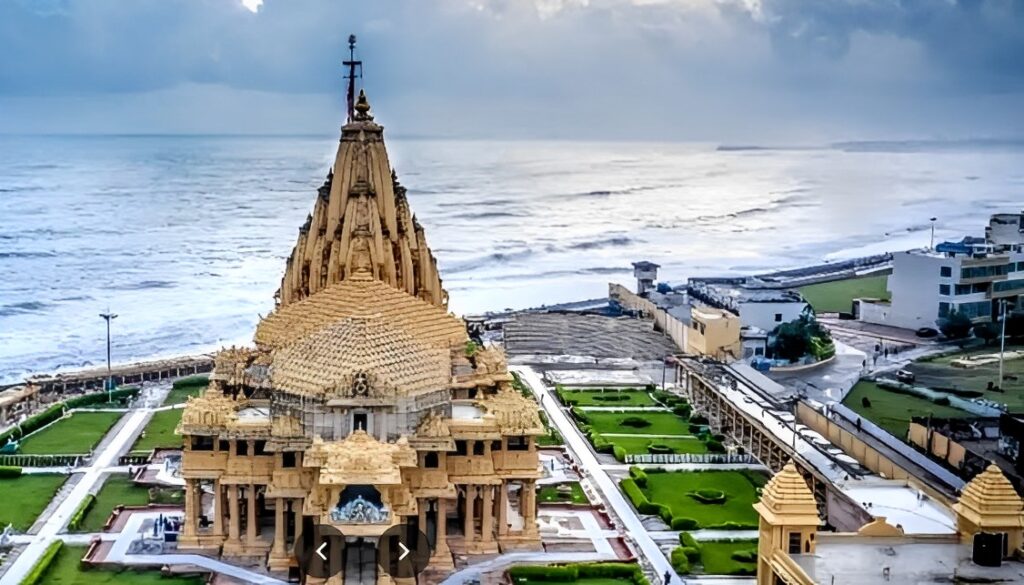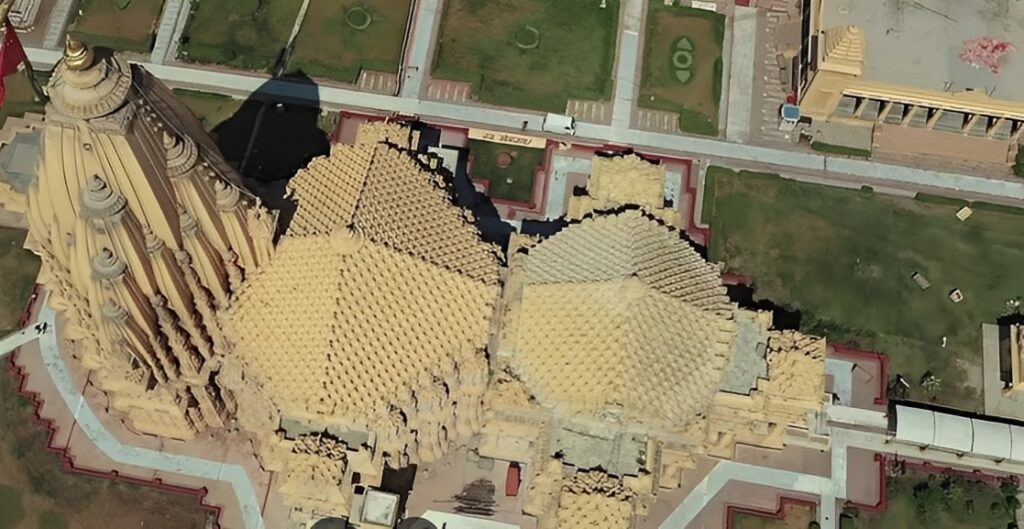The temple that has suffered the most from the invasion of Muslim raiders is the Somnath Temple. Somnath Temple is located in the Gir Somnath District of Coastal Gujarat’s Saurashtra Region. The nearby ancient trading port of Veraval drew merchants who were seafaring and trading goods with the Middle East.
Nomenclature
Moon was cursed by his father-in-law, Daksha, for not paying equal attention to her other 26 wives in Hindu mythology. Som was in love with his wife, Rohini. So, in order to cure his illness, he prayed to Lord Shiva and built the temple on Brahma’s advice. It alleviates the curse to some extent and causes the moon to wane on a regular basis. The temple was built around the 7th century by the Maitraka kings of Vallabhi Gujarat; it was attacked in 725 by the Arab governor of Sindh, Junayad. The name Somnath means “lord of the moon” or “moon god.”

History
Temple history revolves around the construction and destruction of the temple. The temple was built around the 7th century by the Maitraka kings of Vallabhi Gujarat; it was attacked in 725 by the Arab governor of Sindh, Junayad. In 815 AD, the temple was rebuilt by Pratihara King Nagabhata II.
Ghazni, a Turkish Muslim raider, plundered the Somnath temple in 1024, taking away wealth worth 20 million dinars. Because of its location, merchants pay tribute in gold to the temple.
According to the inscription, the Hindu king Kumarapa built the Somnath temple in 1169 after Gazni, with stone replacing the old wood. In 1299, Allaudin Khilji attacked the temple with Ulugh Khan, and the last attack came under the Mughal ruler Aurangzeb in 1706.

The architecture of Somnath temple
The mention of Somnath is found in the Puranas and the Hindu epics. During the archaeological excavation, the remains of the foundation revealed that the Garbhgriha was well connected to Mukhamandpa and Gudhmandapa. According to the Sanskrit Vastu shastra, the temple was open to the east, with Khumbas aligned to the hall on the west end. The evidence found during the excavation confirms it was a Shiva temple.
Before independence, the Junagarh ruler ceded the state to Pakistan. It was a contest between India and annexed the state through a referendum. In the post-independence era, after the integration of Junagarh state into India, Sardar Vallabhbhai Patel ordered the restoration of the temple. However, following Sardar Patel’s death, Km Munshi, Minister of Food and Supplies, took on the task of rebuilding the temple. In 1951, he invited Rajendra Prasad for an installation ceremony. Here, Rajendra Prasad said that “Somnath Temple signifies that the power of creation is always greater than the power of destruction.”
The temple is currently seven stories tall and 155 feet long. It sits on the Triveni Sangam of three holy rivers—Hiran, Kapila, and Saraswati. The temple, designed by Sompara architects in the Chalukya style, houses the Sabha mandapa (assembly hall) and the Nritya mandapa (dance hall). Intricate carvings on the wall, ceilings, and big temple gardens, plus an entrance gateway called Digvijay Dwar, make a temple a beautiful piece of architecture.
How to reach Somnath temple
Road: Somnath is well connected to major cities like Ahmedabad and Porbandar in Gujarat.
Train: Veraval station 5 km from Somnath temple
Air: Veraval and Jafrabad airports are the closest options. Sardar Vallabh bhai Patel at Ahmedabad can be also your option
If you love temples, I am sure you will like to read Dwarakdish temple which is situated at a distance of 237 km from the Somnath temple
